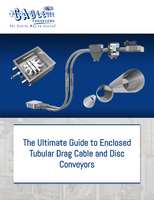NREL Research earns two prestigious R/D 100 awards.
Press Release Summary:
Developed at NREL, Desiccant-enhanced Evaporative (DEVAP) Air-Conditioning Cycle cools commercial buildings at a small fraction of the energy use of a traditional cooler, releases far less carbon dioxide, and could cut costly peak electricity demand by 80%. SJ3 3-Junction Solar Cells, utilizing tunable bandgaps, lattice-matched architecture, and ultra-concentration tunnel junctions, achieve world record conversion efficiency of 43.5% with potential to reach 50%.
Original Press Release:
NREL Research Earns Two Prestigious R&D 100 Awards
A revolutionary new approach to air conditioning, and a three-junction solar cell that holds the world efficiency record - both developed at the U.S. Department of Energy's (DOE) National Renewable Energy Laboratory (NREL) - have been named among this year's most significant innovations by R&D Magazine.
"These two R&D 100 awards honoring our work in solar cells and energy efficiency demonstrate how NREL research produces results that can be moved to the marketplace," NREL Director Dan Arvizu said. "Investments in energy research and development create jobs in America while also advancing the goal of a clean energy future."
The two prestigious awards bring to 52 the number of R&D 100 awards that NREL has won since 1982.
Both can be huge difference-makers in the near future.
Desiccant-based air-conditioning uses far less energy
The Desiccant-enhanced Evaporative (DEVAP) Air-Conditioning Cycle cools commercial buildings at a small fraction of the energy use of a traditional cooler, provides superior comfort in any climate, releases far less carbon dioxide, and could cut costly peak electricity demand by 80 percent.
Developed by NREL scientist Eric Kozubal and his colleagues Ron Judkoff, Jason Woods and Jay Burch, with industrial partners AIL Research and Synapse Product Development LLC, DEVAP can work in any climate, including areas that are hot and humid, by employing an innovative combination of air-cooling technologies to reduce energy use. It relies on the desiccants' capacity to create dry air using heat and evaporative coolers' capacity to take dry air and make cold air.
Air conditioning currently consumes about 15% of the electricity generated in the United States and is a major contributor to peak electrical demand on hot summer days, which can lead to escalating power costs, brownouts, and rolling blackouts. DEVAP uses 40 percent to 80 percent less energy than top-of-the-line refrigeration-based air conditioning.
SJ3 solar cell uses three layers, ideal band gap to achieve 43% efficiency
SJ3 solar cells, developed by Daniel Friedman and his NREL team of Sarah Kurtz, Jerry Olson, John Geisz, Aaron Ptak, Bob Reedy, Brian Keyes and Steve Johnston, with industrial partner Solar Junction, use tunable bandgaps, lattice-matched architecture, and ultra-concentration tunnel junctions to achieve a world-record conversion efficiency of 43.5% with potential to reach 50 percent.
The 43.5% efficiency occurs under lens-focused light having 418 times the intensity of the sun. The conversion efficiency of a solar cell is the percentage of the solar energy to which the cell is exposed that is converted into electrical energy.
SJ3 achieves world-record efficiency at almost no additional cost by replacing the bottom germanium layer of the three-junction cell with gallium and a dash of a dilute-nitride alloy. That small change cranks the bottom band-gap from a too-small 0.67 eV (electron volts) to an ideal 1.0 eV.
Like a three-blade safety razor that uses all its blades for a closer shave, the three-layered SJ3 cell captures different light frequencies, ensuring the best conversion of photons to electrons.
Depending on the time of day - from morning to late afternoon - one or another of the layers is working hardest converting sunlight into electricity.
"Congratulations to this year's R&D 100 award winners," said Energy Secretary Steven Chu. "The research and development at the Department of Energy's laboratories continues to help the nation meet our energy challenges, strengthen our national security and improve our economic competitiveness."
50th year of Awards for Innovation
A full list of this year's winners is available at www.rdmag.com.
The winners represent a cross-section of industry, academia, private research firms, and government labs, according to a statement by the magazine's editors. Winning technologies are used in medical, industrial, research, consumer, and manufacturing applications.
Since 1963, the R&D 100 Awards have identified revolutionary technologies newly introduced to the market. Many of these have become household names, helping shape everyday life for many Americans.
Winners of the R&D 100 Awards are selected by an independent judging panel and the editors of R&D Magazine. The publication and its online portal serve research scientists, engineers, and other technical staff members at high tech industrial companies and public and private laboratories around the world.
Winners will be recognized at the R&D 100 Awards Banquet on Nov. 1 in Orlando, Fla.
NREL is the Department of Energy's primary national laboratory for renewable energy and energy efficiency research and development. NREL is operated for DOE by the Alliance for Sustainable Energy, LLC.
Visit NREL online at www.nrel.gov.
Media may contact:
William Scanlon
303-275-4051
William.Scanlon@nrel.gov
NREL news releases are also available via a RSS Feed.




